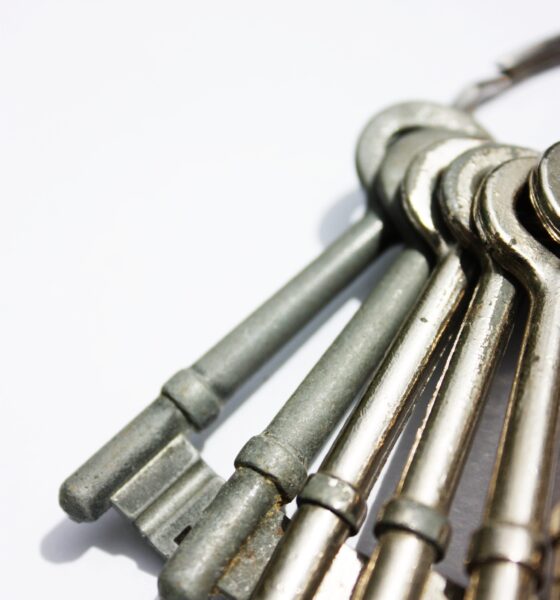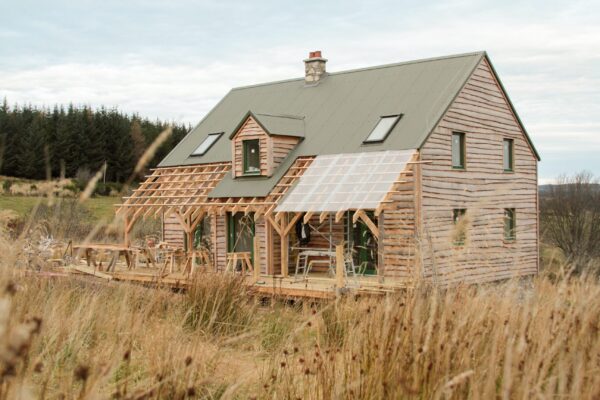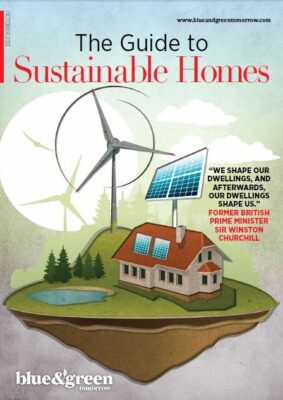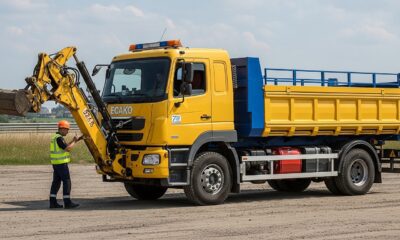

Economy
Sustainable mortgages: designed as if people and the planet matter
Mortgages aren’t everyone’s first choice of specialist subject. Most people see them as an important but uninspiring means to an end: owning a home. But what if they were more than that? What if mortgages were a force for good in the world? What if they actually helped build a more sustainable future? Anna Laycock of Ecology Building Society says they are and they can.
This article originally appeared in Blue & Green Tomorrow’s Guide to Sustainable Homes 2013.
The concept of sustainable mortgages isn’t as new as you might think. At Ecology, we’ve been doing them since 1981, and we’re not the only ones to claim to offer a ‘green mortgage’. But like any type of ethical investment, some claims stand up to examination better than others.
Let’s look at some green mortgage offers, past and present. Ecology aside, there are broadly three claims to sustainability, which I’ll present in reverse order of credibility.
1. Your statements are printed on recycled paper
Moving swiftly on…
2. We plant some trees on your behalf
We love trees at Ecology; the more the merrier. But given that each of our homes generate 3.2 tonnes of carbon each year, before we even consider the global carbon impact of the financial industry, even a forest of mortgage-backed pines isn’t going to do the job. Perhaps it’s better to save the carbon in the first place?
3. You can use it to do green stuff
Now we’re talking. In the wake of rising energy prices and the launch of the green deal, we’ve seen some lenders begin to offer additional borrowing facilities for energy efficiency improvements. The money has to be used to install measures from a pre-defined list, usually ranging from insulation to small-scale renewables. Given that green deal rates are around the 7% mark, this could be a simpler and cheaper way to save energy at home. But what we’re really looking at here is a greenish add-on to a mortgage, rather than a mortgage that’s genuinely sustainable.
The dire state of our housing stock and the threat of irreversible climate change demand a better response than this. So what does a genuinely green mortgage look like?
For a start, it’s about sustainability in the fullest sense of the word, embracing people and their homes, communities and their environments. That’s why we’re called Ecology: the term is derived from two Greek words: oikos, meaning home, and logos, meaning science or knowledge. So the word implies understanding of our home.
Sustainable mortgages apply this concept to lending decisions, supporting properties that respect their environment and enable communities to flourish. That’s why you’ll see Ecology supporting housing co-operatives and affordable housing projects as well as pioneering eco-builds.
The hallmark of a sustainable mortgage is how the lending decision is made. Mainstream lenders look at potential borrowers from a purely financial perspective: what’s the risk and what’s the reward? Customers are sources of profit – anything that doesn’t relate to this is largely irrelevant.
Ecology sees things differently. Our members are agents for change. We need to consider the financial risk of a project to ensure that we’re protecting our members’ deposits, but what we’re really interested in is ecological risk and reward. Our lending decisions are based on whether the project has an environmental and social benefit, whether minimising its negative impact or creating a net positive.
You could argue this makes us a niche lender, because it means we’ll only lend to projects where we can see the sustainability benefit. But in reality it means we’ll often lend on projects that other lenders won’t consider, because they see them as innovative or unfamiliar. For us, the ecological consideration overrides that – and after 32 years of lending, there’s not much we haven’t seen before. So we lend for self-builds, conversions, restoration of derelict properties (including empties), alternative tenures like cohousing and properties built with unusual materials, such as straw bales, timber or cob.
We can consider projects that are out of the norm because our decisions are made by human beings. This may not sound radical, but in the world of financial services, it really is. Rather than the computer-says-no approach, our team treats each application individually and weighs up the ecological and financial benefits and risks. By doing this, we help to spur the development of new ecological building approaches and pave the way for other institutions – our groundbreaking lending for self-build catalysed the development of the UK’s self-build mortgage market.
If you’ve got a mortgage, the chances are the interest rate is pretty important to you – and it’s the same with a sustainable mortgage. The difference is that for a genuinely sustainable mortgage, the price (the interest rate) is aligned to ecological impact. How much you pay for borrowing money should reflect the sustainability credentials of your project. So Ecology C-Change discount scheme adjusts the price of our mortgages to reflect a property’s climate impact.
There are three versions of the discount: C-Change energy efficiency is based on the energy efficiency measures or renewables installed, C-Change sustainable homes is based on achieving a recognised energy efficiency standard, and C-Change retrofit is based on improvements in a home’s energy efficiency. We introduced the latter to extend our offer to the 26m leaky, inefficient homes in the UK, recognising that we needed to drastically improve the efficiency of our existing housing stock if we are to meet our emissions reduction targets.
The challenge shouldn’t be underestimated: our homes currently contribute over 27% of our carbon footprint. If your home is draughty and cold, you’re part of the problem. But it’s not just about trying to ensure our atmosphere can still sustain us – it’s also about a much more immediate problem. Energy bills have risen on average £300 over the past three years and today 2.4 million people live in fuel poverty.
A home that wastes energy just isn’t economically sustainable. That’s why we want to see other mortgage lenders follow our approach: because it’s in the interests of their borrowers as well as the wider environment.
 While we’re on the subject of money: have you ever thought where your mortgage comes from? Who provides the money? That’s an important part of a sustainable mortgage, too. Ecology’s mortgages are funded by our savers, a community of people who want their money to build a better future. We don’t borrow money on the wholesale markets – we simply connect savers and borrowers who share the same values. Likewise, the profit that we make belongs to our members and is retained to fund future lending. The interest you pay on your mortgage will be contributing to your bank’s profits. What are they doing with it?
While we’re on the subject of money: have you ever thought where your mortgage comes from? Who provides the money? That’s an important part of a sustainable mortgage, too. Ecology’s mortgages are funded by our savers, a community of people who want their money to build a better future. We don’t borrow money on the wholesale markets – we simply connect savers and borrowers who share the same values. Likewise, the profit that we make belongs to our members and is retained to fund future lending. The interest you pay on your mortgage will be contributing to your bank’s profits. What are they doing with it?
Sustainable mortgages aren’t about add-ons and they aren’t about gimmicks. They’re mortgages designed as if people and the planet matter more than profit. They’re a form of money that knows its place: a means to a (sustainable) end. We lend sustainably because our mission is to build a greener future. We couldn’t do anything else.
But why would you want a sustainable mortgage? Perhaps you’re already investing ethically, and you realise that how and why you borrow has just as many ethical implications. Perhaps you want the way you live and the place you live in to reflect your concern for the wellbeing of your household, your community and your environment. Perhaps you just want a home that’s comfortable to live in and doesn’t cost the Earth in energy bills. They’re all good places to start.
So if you’re curious, ask your mortgage provider what their approach is to sustainable lending. See if they mention recycled paper.
Anna Laycock is communications and research manager at Ecology Building Society.
Further reading:
Solo living is not helping the only Earth we have
Sustainable design should change our behaviour for good
Energy efficiency needs a ‘foot in the door’ of home renovation market
UK second worst for fuel poverty in EU – as groups warn over coming ‘crisis’


 Environment10 months ago
Environment10 months agoAre Polymer Banknotes: an Eco-Friendly Trend or a Groundswell?

 Environment11 months ago
Environment11 months agoEco-Friendly Home Improvements: Top 7 Upgrades for 2025

 Features9 months ago
Features9 months agoEco-Friendly Cryptocurrencies: Sustainable Investment Choices

 Features10 months ago
Features10 months agoEco-Friendly Crypto Traders Must Find the Right Exchange




























